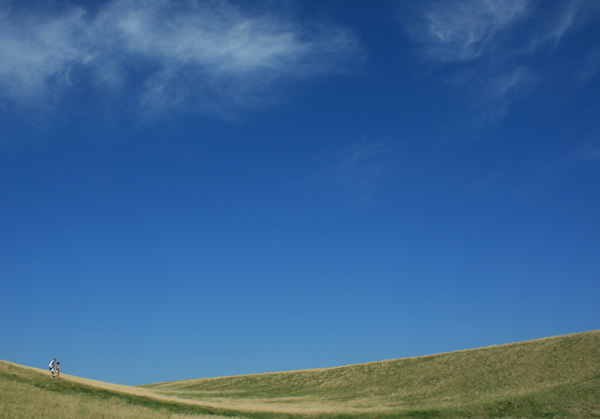Torah Sparks
Numbers 8:1 – 12:16
In this Torah portion the Israelite camp finally embarks on its next stage of its journey to the Promised Land. After almost a year of encampment at the foot of Mount Sinai the tribes march forward with flags waving and trumpets blaring.
Who was in charge of the march? Our text tells us that: “It would be according to whether the Cloud [of Glory] would rise up from the Tent [of Meeting] that, afterwards, the Children of Israel would journey on; and in the place at which the Cloud would rest, there the Children of Israel would encamp. By the word of the Eternal the Children of Israel would travel and by the word of the Eternal would they encamp; for as long as the Cloud would rest upon the Tent they would camp.” (Numbers 9:17-18) So God was the leader. Yet, God could not do all the work alone.
In the middle of the camp, while it rested or when on the move, was God’s shrine, the Tabernacle, with the Tablets of the Torah encased in the Ark of the Covenant. So God’s Presence was doubly evident. God’s Cloud of Glory would lead the camp forward. Yet, at the same time God’s Ark would have to be carried, not by a cloud or a pillar of fire, but by us.
The partnership between God and Israel was necessary in order to preserve the community, whether on the road or in repose. Thus the Torah has a remarkable symbol of God’s sheltering Presence in the unique custom we have of writing the letter “nun” backwards to enclose the prayers recited when Israel embarked on its journey and when it rested again. Those inverted letters symbolize, according to kabbalistic tradition, the Face of God turned backwards toward us as we marched forward, ever making sure that no one was left behind on the difficult journey. But God could not supervise us alone. The tribe of Dan was the last tribe to march in the long procession of Israelites. It was given the task to be “the one who collects all stragglers from all the camps.” (Number 10:25). The Israelites were not simply passive followers of God’s guidance. They actively reached out to their brothers and sisters to make sure they were safe and included in the journey.
This partnership is given a stark expression at the very end of the Torah portion. In an episode we cannot investigate this time, Miriam is stricken with leprosy and must stay outside the camp until she recovers. (For more on this issue see last week’s Torah Sparks.) The verse reports: “And Miriam was isolated outside the camp for seven days; but the people did not travel on until Miriam was collected back into the camp.” (Num. 12:15) Here the travelling of the Israelites is stalled. But the reason given is not that the Cloud of Glory had not moved on. We are meant to see this encampment as dictated, not by God’s decision, but by the insistence of the people themselves to stay close to their beloved Miriam. The roles are reversed. As long as the people would not move on, the Cloud would not move, either.
Shabbat Shalom
Rabbi David Greenstein
Image “walking (together)” by “defrog” used with permission via Creative Commons: Attribution License
- Toby Stein: In Memoriam - Thu, Feb 8, 2024
- Faithfulness and Hope: Parashat Sh’lach - Thu, Jun 23, 2022
- Past Their Prime: Parashat B’ha`a lot’kha - Thu, Jun 16, 2022

